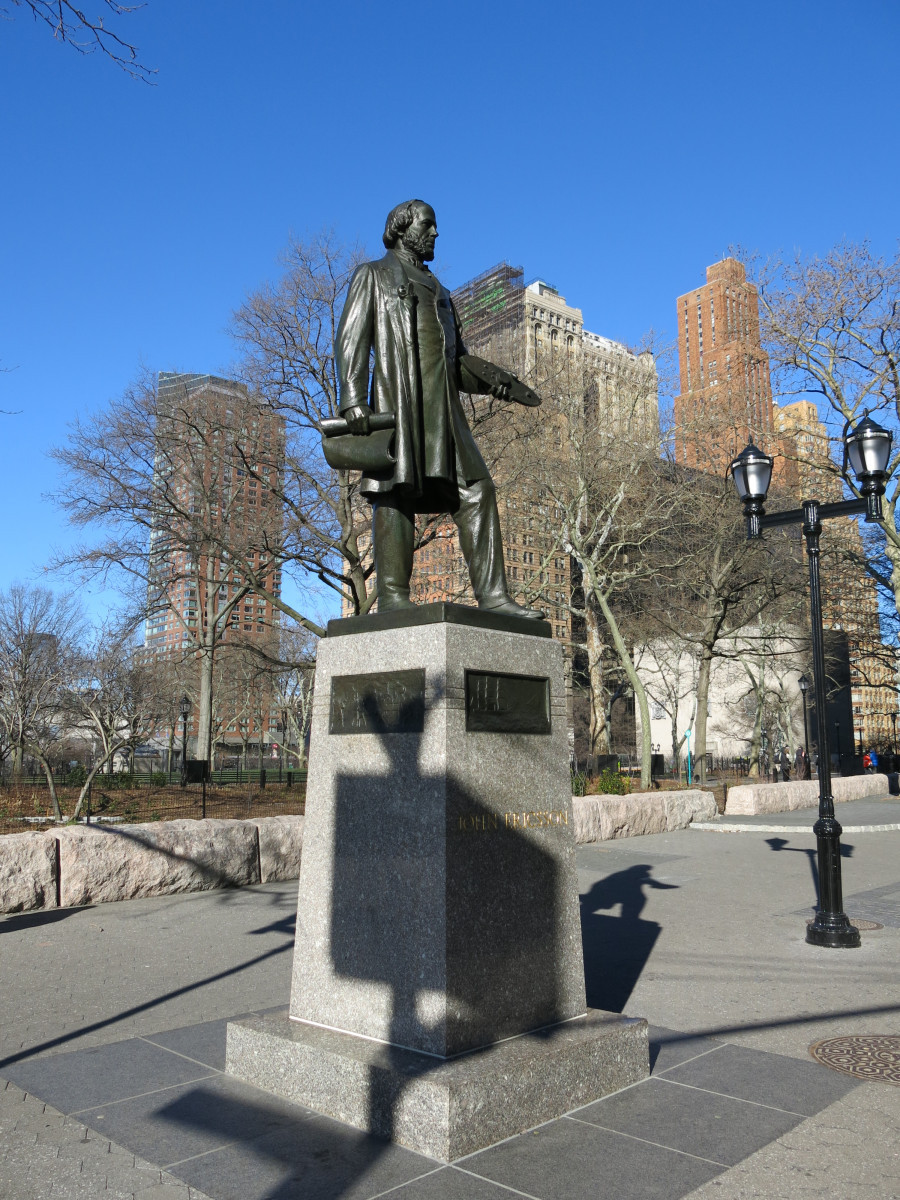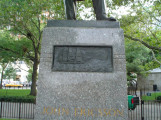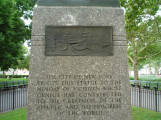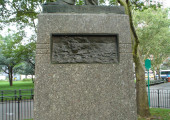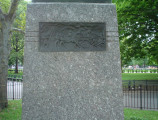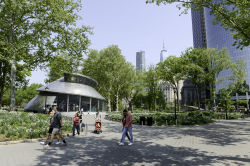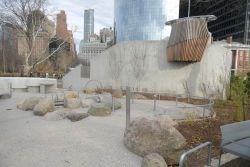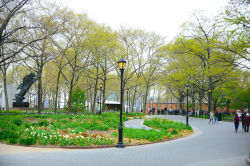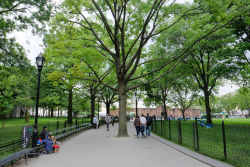The Battery
View all monuments in NYC Parks, as well as temporary public art installations on our NYC Public Art Map and Guide.
John Ericsson
| Artist: | Jonathan Scott Hartley |
| Dedicated: | August 1, 1903 |
| Location: | Perimeter of park on State Street across from Bridge Street |
Artwork History
This 1903 statue by Jonathan Scott Hartley (1845–1912) depicts the esteemed Swedish-American engineer and inventor John Ericsson (1803–1889), who helped to revolutionize military-maritime technology with his ironclad warship, the Monitor.
Ericsson was born in Langbanshyttan, Sweden to a mining proprietor father, observing and developing an interest in the operations of mining machinery as a child. Ericsson displayed an early talent for engineering, building a miniature sawmill before he was 11. His precocious ability caught the attention of the well-known engineer Count Platen, who appointed Ericsson a cadet in the corps of mechanical engineers at age 12. By age 14, he was placed in charge of 600 soldier operatives, while he himself made mechanical drawings for the canal project.
In 1836 Ericsson invented and patented the screw propeller, a device that vastly improved steam vessel travel. Approached by the United States Navy, Ericsson came to the United States in 1839, and designed a frigate, the Princeton, which united many of his technological inventions, including state-of-the art screw propellers, smokestacks, ventilators, optical instruments, and gun carriages. However, a demonstration in 1844, in which a large gun accidentally exploded, killing the United States secretaries of the Navy and State, tarnished Ericsson’s reputation. Despite this setback, his engineering career revived in 1861 with the design and construction of the Monitor iron-clad war ship.
The Monitor was Ericsson’s response to the Confederacy’s intent in early 1861 to ironclad its warship, the Merrimac. Ericsson built the Monitor at the Continental Iron Works foundry in Greenpoint, Brooklyn; its engine and machinery were fabricated in Greenwich Village at the Delamater Iron Works. The keel was laid on October 15, 1861, and within an astounding 100 days, the Monitor was launched. Ericsson’s newfangled ship was put to the test in a famous battle against the Merrimac off of Hampton Roads, Virginia on March 9, 1862, where the Union forces averted defeat. He dedicated his later years to diverse scientific investigations, including experiments with solar power and its practical applications. For his efforts he had many honors bestowed upon him in the United States, Sweden, and other European nations. He died on March 8, 1889, in New York City.
Less than four years after his death, the distinguished sculptor Johnathan Scott Hartley was commissioned by the state to create a larger-than-life bronze portrait of Ericsson, which was dedicated April 26, 1893 in Battery Park. The pedestal was designed by architect Frank Wallis; Hartley and Wallis also collaborated on the Algernon Sydney Sullivan Memorial, unveiled in Van Cortlandt Park in 1906. Ten years later the sculptor, dissatisfied with his first version, crafted a modified statue, cast at the local Roman Bronze Works, and dedicated on August 1, 1903, a day after the centennial of Ericsson’s birth. In 1939 a monument to Ericsson and the Monitor was unveiled in McGolrick Park, Brooklyn.
The sculpture in Battery Park depicts the bearded Ericsson holding a boat model in his hand. The pedestal features inset bronze bas-reliefs, which illustrate significant naval battles involving the Monitor and Princeton, as well as an array of Ericsson’s mechanical inventions. Over time the monument suffered extensive damage, the result of weathering, vandalism, and even a fire. In 1996 the sculpture was conserved by Parks’ monuments crew, and as part of overall improvements to Battery Park, the sculpture is slated to be moved from its present location to a more prominent site near a perimeter entrance.
Artwork Details
| Description: | Figure (heroic scale) on integral plinth, pedestal with four recessed relief plaques |
| Architect: | Frank E. Wallis (new pedestal) |
| Materials: | Figure--bronze; Pedestal--black diamond granite (polished); Plaques--bronze |
| Dimensions: | Figure H: 8'7"; Base H: 7'11" W: 8' D: 8'; Each plaque H: 1' W: 2'3½" |
| Foundry: | Gorham Manufacturing and Founders (statue); Roman Bronze Works, Inc. (plaques) |
| Donor: | State of New York |
| Cast: | 1903 |
Inscription
Integral plinth, right:[signed] J.S. Hartley 1902 /
Pedestal front:
ERICSSON /
Pedestal back:
THE CITY OF NEW YORK / ERECTS THIS STATUE TO THE / MEMORY OF A CITIZEN WHOSE / GENIUS HAS CONTRIBUTED / TO THE GREATNESS OF THE / REPUBLIC AND THE PROGRESS / OF THE WORLD /---/ APRIL 26 1893 /---/ ON JULY 31 1803 JOHN ERICSSON WAS / BORN IN LANGSBANSHYTTAN SWEDEN / DIED IN NEW YORK MARCH 8 1889
Please note, the NAME field includes a primary designation as well as alternate namingsoften in common or popular usage. The DEDICATED field refers to the most recent dedication, most often, butnot necessarily the original dedication date. If the monument did not have a formal dedication, the yearlisted reflects the date of installation.
For more information, please contact Art & Antiquities at (212) 360-8163.
Check out your park's Vital Signs
Clean & Safe
Green & Resilient
Empowered & Engaged Users
Share your feedback or learn more about how this park is part of a
Vital Park System

Know Before You Go

